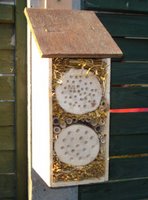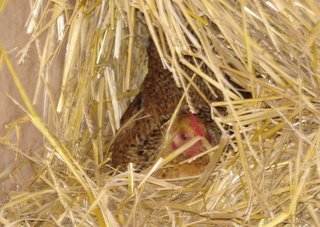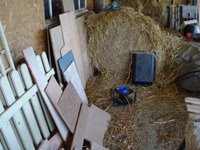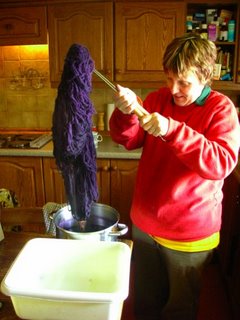
“All a musician can do is to get closer to the sources of nature, and so feel that he is in communion with the natural laws.” John Coltrane (American jazz saxophonist 1926-1967).
We’ve certainly been responsible for getting two musicians closer to nature this week but you’ll have to ask them whether they thus now feel more in communion with the natural laws. Two old (read “longstanding”!) friends of Gabrielle's, Tab and Nick, arrived on Monday in Nick’s battered old, vegetable oil-powered Mercedes Benz. They were just in time for lunch, where we were also joined by Remi (who I met on site when working on a straw-bale house build) his wife Solenn and their two-week old daughter, Enna. “Lunch” just doesn’t do justice to what the French usually eat around midday and, after four courses and coffee, Tab and Nick got out their guitars. The photo above shows them serenading Solenn and Enna.
Our guests might be on holiday but, for us, normal life continues and (very) long overdue on the list of things-to-do, was to finish planting the 150-odd trees I’d impetuously bought (see blog of Sunday, March 4th). Which is how we came to have two musicians in our woods Wednesday morning, getting “closer to nature” while offering us a coup de main (helping hand).
More than once, I’ve admitted that permaculture can sometimes be more theory than substance. I’d remembered seeing a planting diagram in one of my permaculture books that explained how, if one planted in curves (like a sine wave) rather than straight lines, more plants could be fitted into a given area. After rifling through many pages of many books, I found the diagram I’d been thinking of. Curves had been drawn to show the planting lines but, consider a join-the-dots diagram before the numbers have been joined by lines and what have you got: just dots. Not only that, but also the numbers mentioned and advantage claimed in the caption didn’t even match the diagram…hmmm. I spent some time pondering all this and, for a given distance between plants, an equilateral triangle seems to be the most space efficient. This reduced inter-row distances from 2.1metres down to 1.8m but still left us with straight lines of saplings.

That is, until we introduced our two musicians to the plot. It started well but then…
Call it “lack of concentration” or call it “improvisation”, whatever, but we moved into what I can only describe as jazz-planting. All the trees are now in the ground and watered in. This is months after they should have been, the best time being during November / December, to give the roots time to settle in before the growing efforts of spring. And all 150 saplings are squeezed in to the 1200 square-metre oblong at the correct spacings in a pattern that starts with the few neat rows that we’d planted a couple of days before, gradually changing into a much more satisfying free-form pattern.
For Nick’s own take on life, have a look at his Deadbeat Diaries and click here to read about Tab’s music.












